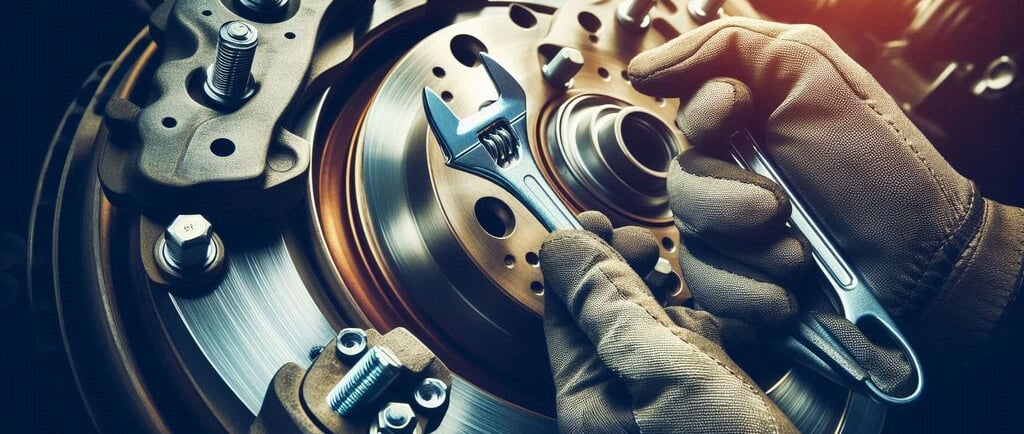Brake Rotors and Discs
When you press down on your car’s brake pedal, you rely on a crucial part of the braking system to bring your vehicle to a stop — the brake rotors and discs.
BRAKING SYSTEMS
11/13/20244 min read


Brake Rotors and Discs: Essential Components for Your Vehicle’s Safety
When you press down on your car’s brake pedal, you rely on a crucial part of the braking system to bring your vehicle to a stop — the brake rotors and discs. These components play a vital role in the safety and performance of your car, so understanding how they work and why they need to be maintained is essential. In this article, we’ll explore the importance of brake rotors and discs, the different types available, and tips for keeping them in top condition.
What Are Brake Rotors and Discs?
Brake rotors (or discs) are metal components attached to each wheel of your vehicle. When you press the brake pedal, brake pads clamp down on the rotors, creating friction that slows down the vehicle. Over time, rotors experience wear from this constant friction, and their condition is essential to the overall effectiveness of your braking system.
Key Functions of Brake Rotors and Discs
Heat Dissipation: As you brake, friction generates heat. Brake rotors help dissipate this heat, preventing the system from overheating.
Pressure Distribution: The brake pads apply pressure to the rotors, creating a stopping force that slows or stops the vehicle.
Vehicle Control: Properly functioning rotors ensure that the car stops smoothly, allowing you to maintain control while braking.
Different Types of Brake Rotors
Brake rotors come in various designs, each tailored to different driving needs and performance levels. Understanding these types will help you choose the right one for your vehicle.
1. Smooth Brake Rotors
Smooth or plain rotors are the most common type found in everyday vehicles. They are simple and cost-effective, providing reliable braking for regular use.
Benefits of Smooth Brake Rotors:
Cost-effective
Low noise
Reliable for everyday driving conditions
2. Slotted Brake Rotors
Slotted rotors have grooves carved into the surface to help improve performance by allowing gas, dust, and water to escape from the surface. This design enhances grip and cooling, making them ideal for high-performance or racing vehicles.
Benefits of Slotted Brake Rotors:
Better heat dissipation
Improved braking performance, especially in wet conditions
Suitable for aggressive driving
3. Drilled Brake Rotors
Drilled rotors have holes drilled into the surface to increase airflow, cooling, and performance. These are often used in sports cars or high-performance vehicles but can be prone to cracking if used improperly.
Benefits of Drilled Brake Rotors:
Superior heat dissipation
Reduced brake fade
Great for performance driving
4. Drilled and Slotted Brake Rotors
Combining the best features of both drilled and slotted designs, these rotors offer superior cooling, grip, and performance. They are commonly used in high-performance vehicles and racing applications.
Benefits of Drilled and Slotted Rotors:
Ultimate heat management
Increased braking performance
Improved wet-weather performance
Signs You Need to Replace Your Brake Rotors
Brake rotors wear down over time and need to be replaced to maintain safe and effective braking performance. Here are some common signs that your brake rotors may need replacing:
1. Vibration or Pulsing When Braking
If you feel a vibration or pulsing in the brake pedal when you apply the brakes, it may be a sign that your rotors are warped. Warped rotors can cause uneven braking and a decrease in performance.
2. Squeaking or Grinding Noises
If your car produces a high-pitched squeaking sound when braking, or worse, a grinding noise, it could indicate that your brake pads are worn down and have begun to contact the metal rotor surface. In this case, both the pads and rotors may need replacing.
3. Visual Wear
Inspecting your brake rotors for visible damage such as grooves, cracks, or thinning can help determine if they need replacement. If the rotor surface is uneven, it may not provide effective braking, and replacement is needed.
4. Reduced Braking Efficiency
If you notice that your vehicle’s braking distance is increasing, or if the vehicle feels less responsive when you press the brake pedal, it could indicate that the rotors are not functioning optimally. This issue should not be ignored, as it can affect your safety.
How to Maintain Your Brake Rotors
To ensure that your brake rotors continue to function effectively, regular maintenance is key. Here are a few tips to keep your rotors in top shape:
1. Inspect Regularly
Inspect your brake rotors every 12,000 miles or as recommended in your vehicle’s manual. Look for any signs of damage such as grooves, cracks, or warping. If you notice any abnormalities, it’s best to replace them promptly.
2. Use Quality Brake Pads
Choosing high-quality brake pads is crucial for rotor longevity. Low-quality pads can wear down more quickly and cause uneven wear on the rotors.
3. Don’t Overheat Your Brakes
Avoid heavy braking over long distances, as this can lead to overheating and potential rotor warping. Take breaks when driving down steep hills to prevent brake fade.
4. Brake Smoothly
Practice smooth and gradual braking whenever possible. Abrupt or harsh braking can cause excessive wear on both the pads and rotors, reducing their lifespan.
Conclusion: Keep Your Brake Rotors in Top Condition
Your brake rotors are a critical part of your vehicle’s braking system, responsible for ensuring that you can stop quickly and safely. Whether you drive a standard car, a high-performance vehicle, or something in between, understanding the types of rotors available and maintaining them properly is essential for safety and performance.



